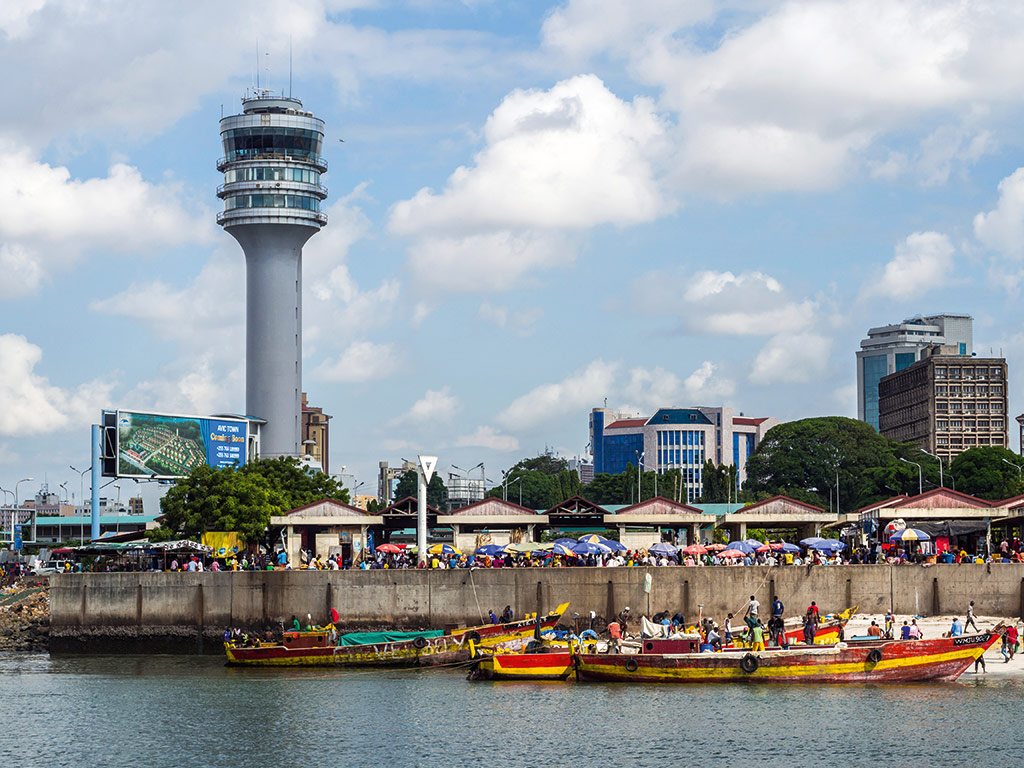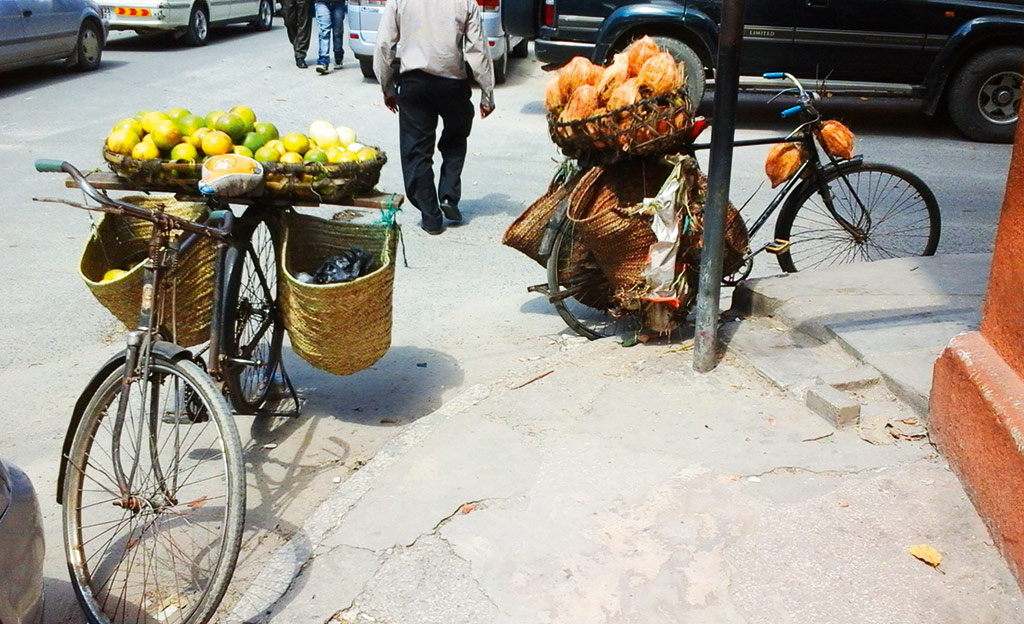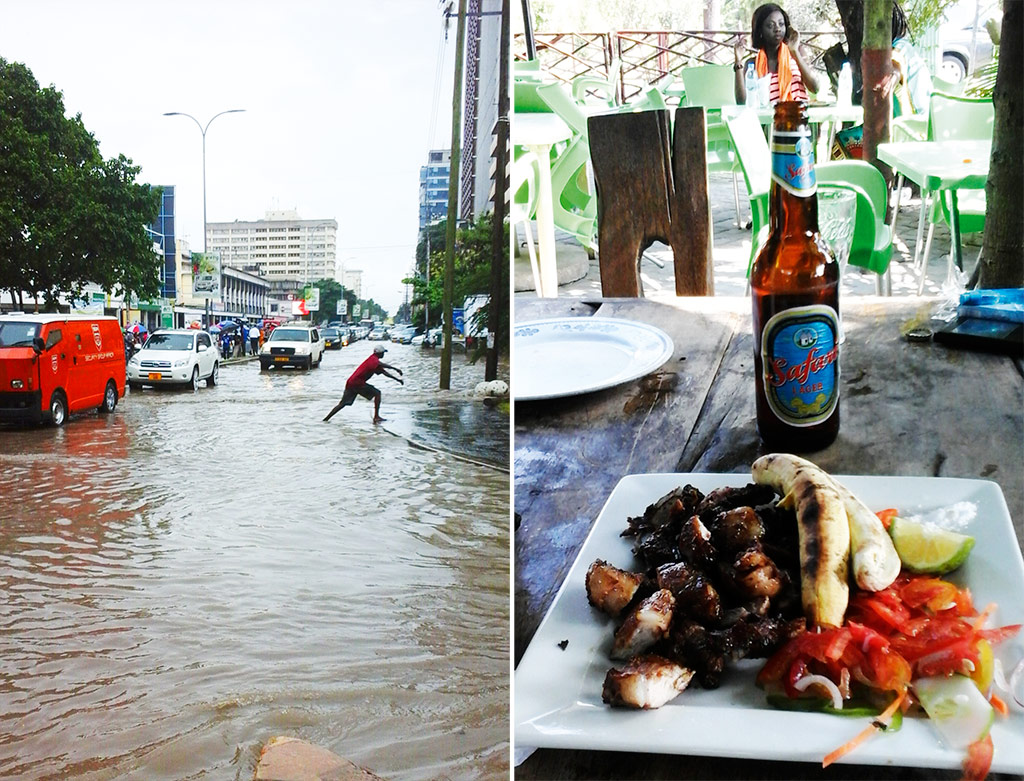Six nights, R13000, no transport allowed. We challenged Niq Mhlongo to explore Dar es Salaam strictly on foot. What did he say? I’ll take it! This is his experience.
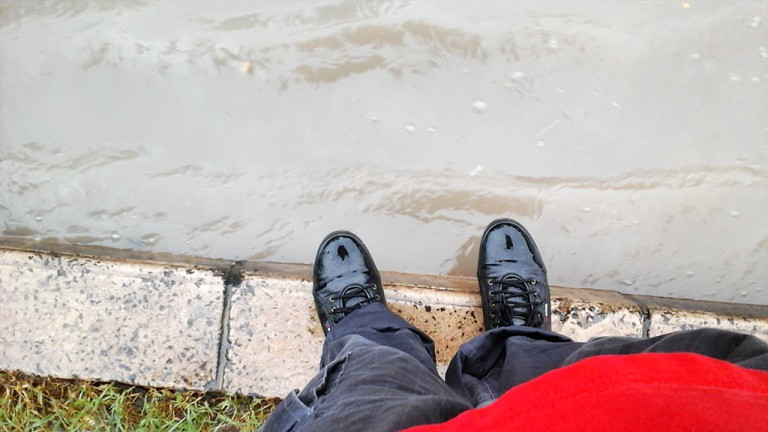
Niq Mhlongo takes to the streets of Dar es Salaam.
If I can personify Dar es Salaam in astrological terms and give this city a zodiac sign, it will definitely be a Gemini. This has nothing to do with me sharing that star sign, but the dual characteristics of the city lean that way. I read somewhere that a Gemini is like two characters residing at opposite ends of the same being, like fraternal twins. While the one is extremely extrovert, garrulous and happy, the other is more of an introvert, quiet and extremely sad at the same time.
Dar is like that. It’s a city of old and new, rural and urban, clean and dirty, formal and informal, poor and rich. It can be expensive or cheap to visit, depending on whether you’re regarded as a local or a tourist.
As a writer, my point of entry into Dar is to observe and learn about it. I’m booked into the heart of the city at the Hotel Nikko Tower, which is convenient for walking. I have a budget of R13000, which I have changed into about $950. Almost $420 has already gone towards my accommodation for six nights.
‘Karibu Nyumbani [welcome home],’ says my driver, Athumiani, who has come to fetch me from Julius Nyerere International Airport. The rain is lashing the city as we drive slowly along the congested Nyerere Road towards the city centre.

The view of the city from the ninth floor of the Hotel Nikko Tower.
In every society, irrespective of race, culture, tradition and religion, rain is considered a blessing. This may not be quite true of Dar es Salaam, though, as it may be a blessing overdone. If you go around April and May, regarded as ‘the season of long rain’, you’re likely to be welcomed by torrents.
Initially, you may not like this. You’ll only start counting your blessings after you’ve realised that the rain is necessary to cool you off in the sweltering heat and humidity of this popular Tanzanian tourist spot.
Athumiani speaks Swahili and his English is very poor. ‘Dar, joto,’ he says as he reaches for the air con, and judging by his facial expression, I can only assume he means ‘hot’.
I’m not feeling tired after the three-hour fight from OR Tambo Airport. The fact that South Africans are no longer required to get yellow fever vaccinations has made this journey easy and cheaper. There are no more delays at the airport and all one needs is a passport, plane ticket and enough money to dine, shop and party.
I’ve been warned about the load-shedding, but as a South African I’m used to that. I’ve brought my external battery charger along. My money is in US dollars and I’ve also been warned not to change them for Tanzanian shillings in the hotel. There are many foreign exchange bureaus along Samora Avenue where I can compare prices. Most of the clothes in my backpack are simple: T-shirts, three pairs of jeans, a pair of flip-flops, a pair of tackies and two windbreakers.
My friend Sandra has offered to show me around and our appointment is at 6pm. She’s a writer, poet and interior designer whom I met through literary networks. The distance from the airport to the city is less than 15 kilometres, but because of the heavy traffic it takes about two hours. I’m convinced that Dar is a ‘walking city’ because of this, but I cannot share that with Athumiani because his English is bad.
That evening I’m walking with Sandra along Ohio Street. She has left her car at my hotel and she tells me Dar is one of the safest places to walk during the day. I fully concur, although my first impression is that the few narrow sidewalks are congested by hawkers and pedestrians.
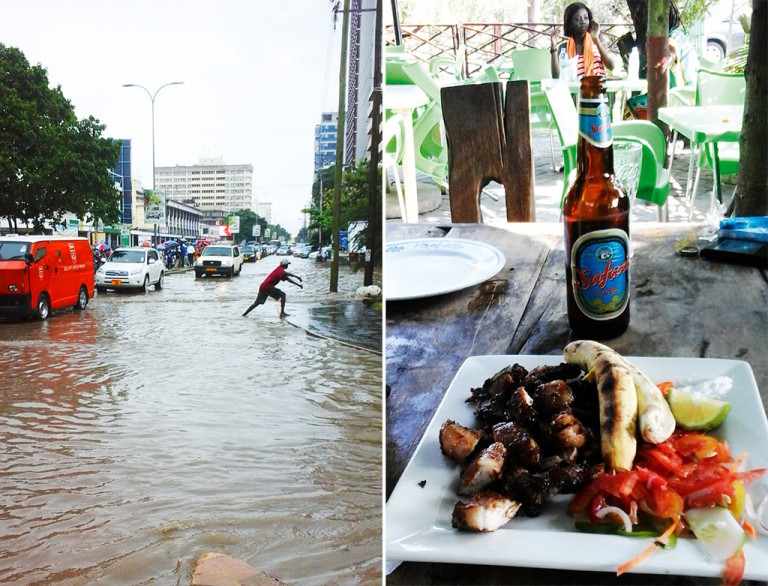
LEFT After the rain, a waterlogged Samora Avenue as a result of Dar’s bad drainage system; RIGHT Nyama choma (braai meat) is a favourite at the Jollies Club – Isumba Lounge.
‘There are several places you can’t afford to miss,’ she says as we walk inside the IT Plaza building along Ohio Street. ‘High Spirit is the best place to start.’
The lift arrives and about a dozen of us get in. Everyone seems to be going to the eleventh floor, chatting in Swahili.
‘How about this place I’ve read about called Samaki Samaki?’ I ask.
‘It’s a great place too. You can have good seafood there. But it’s on the outskirts of the city. There’s also Q-Bar in Oyster Bay, which is full of wazungus (white people) and even hookers. My favourite is Triple Seven, owned by my friend Richie. It’s also on the outskirts.’
Inside, High Spirit is buzzing with people – whites, blacks and Indians. It’s on the rooftop of the building and the DJ is playing an old South African kwaito song, TKZee’s Phalafala. The blue lights create great ambience and a sign next to the bar reads: ‘Daily Happy Hour 5.30pm – 7pm. Hard drinks for softer price.’
It’s 6.45pm and the waiter, Dani, organises a table by a large glass window with a spectacular view of the harbour. Sandra orders Safari and Kilimanjaro beers from him while I admire the 180-degree view of the city. Ten minutes later Dani arrives with a laminated menu and the beers in an ice bucket. I order Indian-style chilli prawns in a roti. Sandra settles on the grilled catch of the day. This is a wonderful place indeed and the DJ plays excellent African music. People start dancing everywhere.
We start our next day with a delicious lunch buffet at the famous Serena Hotel. The ambience is great, with Swahili blues and Afro beats in the background. This is the place where you’ll meet all the famous people of Tanzania, from musicians to TV personalities.
After lunch, I decide to head to the Kariakoo Market, the city’s largest shopping district where you can buy everything from African necklaces and drums to fish and appliances. There are a few bookshops, which stock Nelson Mandela’s autobiography, Julius Nyerere’s books and James Hadley Chase’s work, among others. Most of the books are written in Swahili.
As I set out into the city, my first impression is that the rule about walking on these sidewalks is that there is no rule at all. A cyclist carrying a basket of oranges, a pikipiki rider with a pillion passenger or a cart carrying yams have equal right to the pavement as pedestrians.
The congested traffic on Jamhuri Street works itself into my thinking and walking pace. Drivers are patient as if there’s nothing to hurry home for. There is no hooting, just the smell of petrol in the air. I manoeuvre my way between parked cars and packed daladalas (mini buses).
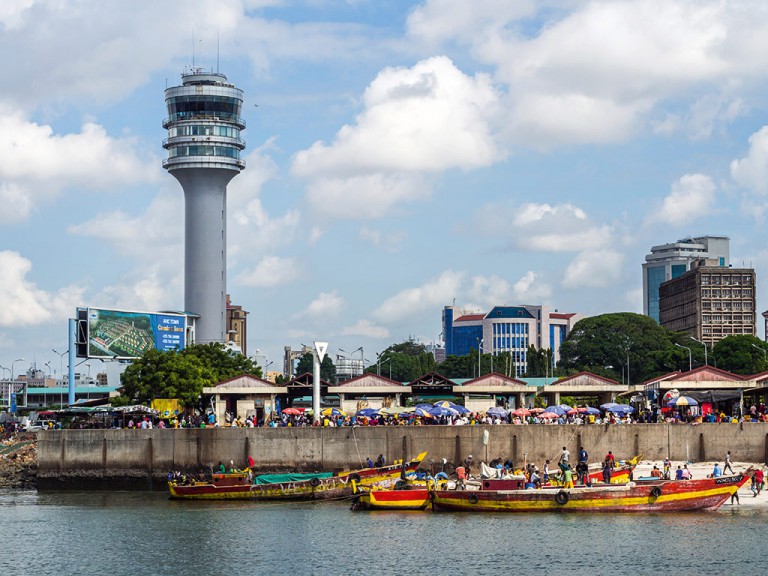
On weekends the waterfront in Dar turns into a bustling fish market.
One day, I head to the fish market. It looks very different from the salubrious parts I’ve been to so far. Life here is on another level and filled with incessant noise. It is a city within a city and is congested with fishermen and traders selling their wares.
A hawker roasts mielie cobs on an open fire, another peels oranges with a sharp knife and another removes the scales off a fresh fish. There are so many types of seafood, and the whiff of fish, octopus, mielies and chicken kebabs roasting on open fires is everywhere.
Walking back to the hotel after my daily excursions is a sort of therapy as it gives me the freedom to reflect. I cannot be harsh about Dar nor judge it according to Joburg standards. It is a city under construction.
Unlike Joburg, it’s safe to walk around without worrying about being mugged, at least during the day. I see few police, except those trying to control the traffic. This is a true Pan-Africanist city held together by the common language of Swahili. The streets bear Pan-African names, from Nkrumah, Luthuli and Lumumba to Uhuru and Samora Machel.
Unlike Joburg, it doesn’t pretend to be what it’s not. It lives up to its name, which means ‘the house of peace’ in Arabic.
The important thing I observe about the city is that there is a different price for locals and for tourists, especially in the market places and airport.
A tourist price applies to everyone who doesn’t speak Swahili. Every white person is regarded as a tourist unless they can negotiate in Swahili. On the face of it, any black person qualifies as a local unless they start talking in English.
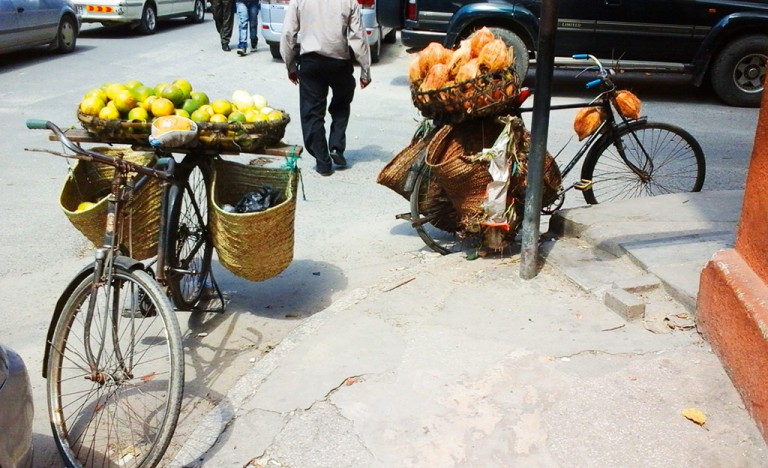
A hawker’s bicycle carrying peeled and unpeeled oranges.
The rain has not stopped falling, as I am walking along Jamhuri Street back to my hotel, the street lights are on. I’m asking why have I declared my love for Dar so fast? I assume it’s because I think we’re both Gemini. I fully concur with astrologists that Gemini individuals are compatible, and the love match between the two is endless fun and energy.
That’s what walking the streets of Dar has done to me – in six days this thriving city has kept me amused and curious to experience more.
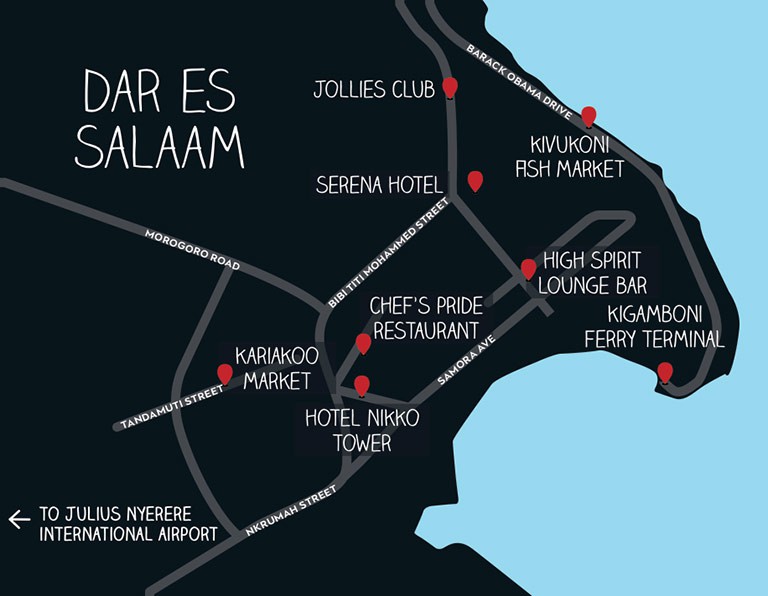
Plan your trip to Dar es Salaam
How to get there
There are daily flights from OR Tambo to Julius Nyerere International Airport with fares as low as R2500 return. I flew Fastjet, which offered the cheapest rates. Although my flight was delayed, Fastjet assured me that 95 per cent of its flights are on time. Be aware that flights are generally late arrivals (after midnight).
When to go
June to October is the driest period, while March to May is the rainy season. Anyone from Tanzania will tell you the best time to go depends on what you want to do. Along the coast, it’s generally August to October.
Need to know
Tourists should expect to pay more. For example, a 15-kilometre taxi trip from the airport to the city centre costs about R173 for a local but tourists pay double this. Beer is roughly R20 – Safari, Tusker, Ndovu and Serengeti are popular. It is advisable to drink bottled water – a 1,5-litre bottle is R3,50 to R4,70 in a supermarket. The price may be double at hotels. Dar is considered to have a low malaria risk, but it is advisable to use malaria prophylactics.
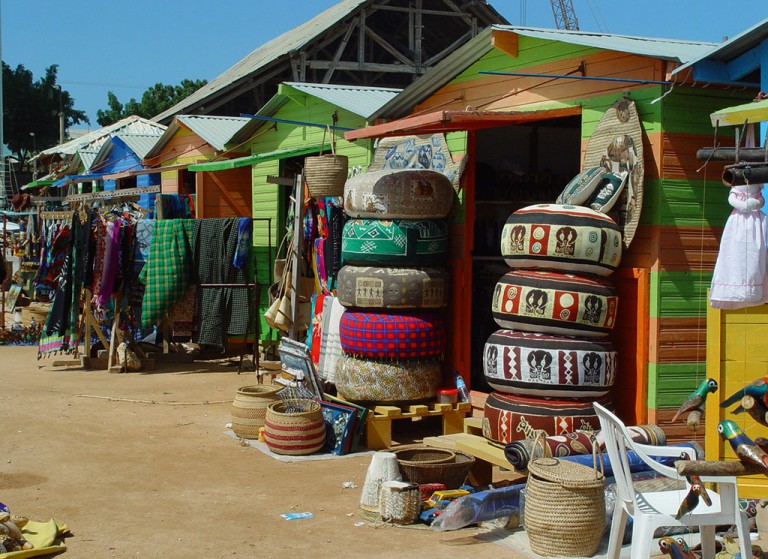
The city’s markets and stalls are colourful and vibrant.
Things to do in Dar
High Spirit Lounge Bar attracts a mixed clientele, offers great happy-hour discounts and good food, and has a great vibe.
Groove Theory happens once a month and is hosted at different clubs around the city, and has a house-music focus. Dates are announced towards the end of each month.
Jollies Club – Isumba Lounge specialises in ragga music and has lots of similarities to Bassline’s ragga nights in Joburg. On Fridays two resident DJs play anything from Beanie Man and Sean Paul to Ace of Base. It’s also where you can get the best nyama choma (braai meat) in town.
Kariakoo Market spans many blocks and sells everything you can imagine, from vegetables to African necklaces and books. It’s in the Ilala District on Tandamuti Street.
Kivukoni Fish Market, on Barack Obama Street, should not be missed. It sells everything fish-like and is madly busy.
Where to stay in Dar es Salaam
Hotel Nikko Tower is central, which is why I chose it, and it has Wi-Fi. There are cheaper hotels, but the Nikko came recommended. The rooms are large and clean and have air conditioning (which is important for the humidity). There is a sports bar on the ninth floor with great views of the city. From R850 per room (sleeps two), but if you book in person, the rate is less than the listed price.
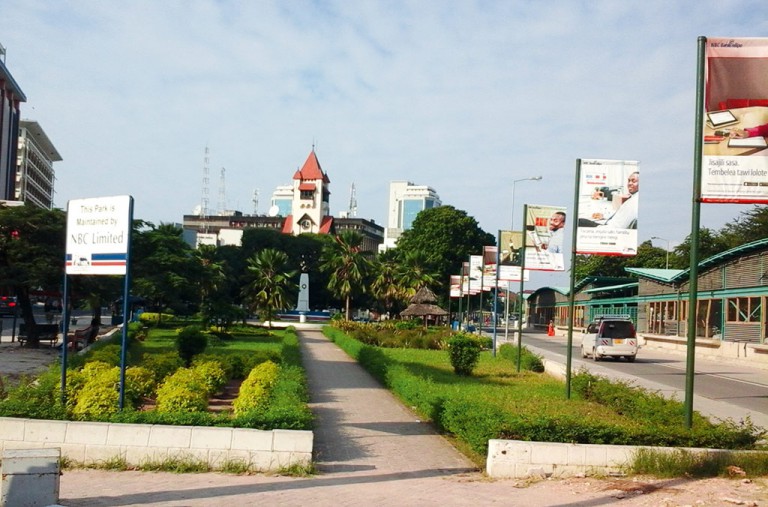
Serena Hotel garden with the two tallest buildings of the city in the background.
Dar es Salaam restaurants
Chef’s Pride has tasty and authentic Swahili dishes. I dined there three times, and both locals and tourists frequent the place. You can get anything from barbecued chicken and mishkaki (shish kebabs) to snapper, goat-meat biryani, masala chips and chapati. Service is excellent and a full dinner costs from about R120.
Serena Hotel has an excellent buffet to a pleasing musical soundtrack. Meals range from grilled fish, prawns, beef and chicken to various salads. I went there twice, once with a vegetarian friend who told me both vegetarians and meat eaters frequent the place. The buffet costs about R215 per person.
This article originally appeared in the September 2015 issue of Getaway magazine.
Please note that prices are subject to change at each establishment’s discretion. Please be sure to check with them before travelling.










